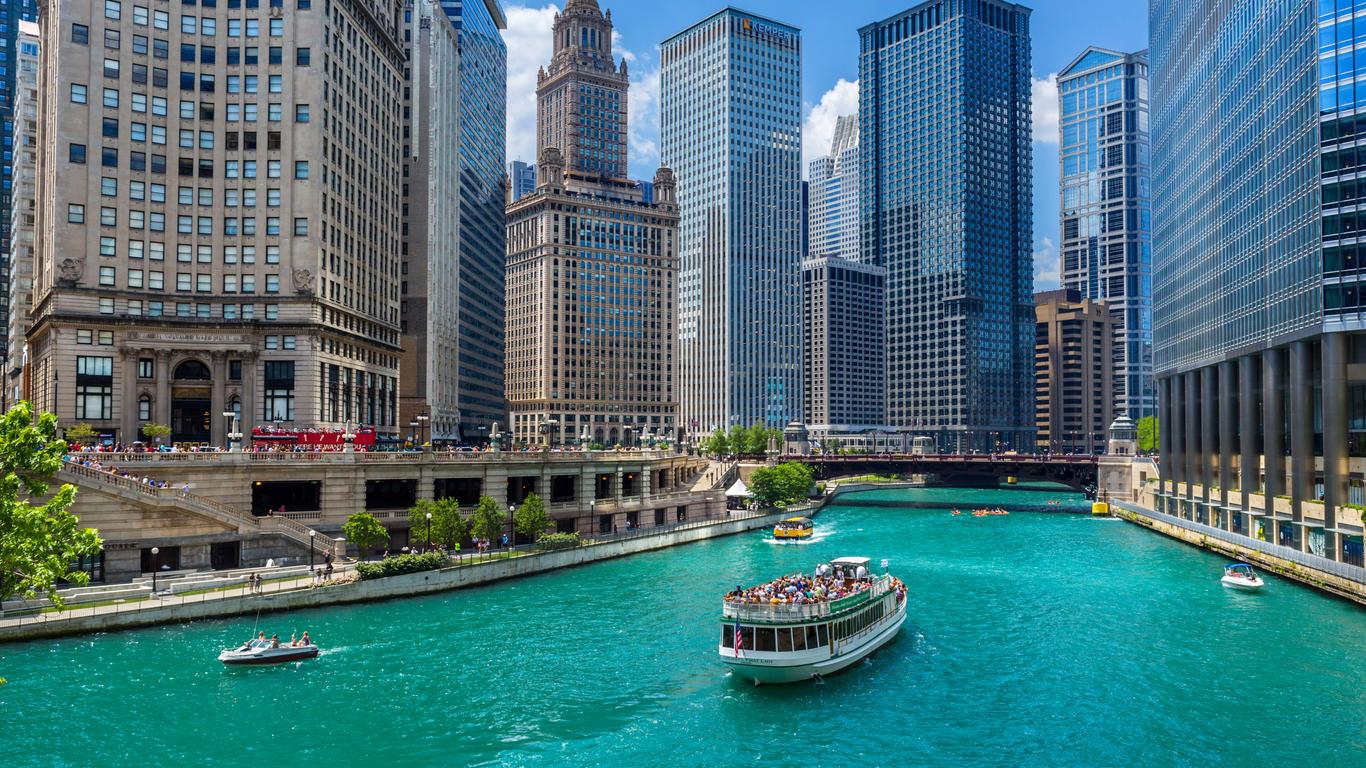The business and political powerhouse of Chicago, the downtown “Loop” area also cradles the city’s historic district and many popular recreational parks and beaches. The Chicago Riverwalk reveals the Loop’s cultural impact, with architectural river tours, water taxi rides, and opportunities for urban kayaking, cycling, dining and wine tasting.
More than 20 colleges and universities in the Loop ensure lively nightlife and entertainment, while the expansive Grant Park draws crowds for events at the Perillo Music Shell and concerts by the Chicago Symphony Orchestra. Visitors find first-class shopping in the Loop Retail Historic District by day, giving way to evening performances at the renowned Joffrey Ballet and Goodman Theatre. The Chicago Cultural Centre showcases hundreds of diverse visual and literary arts exhibitions each year.
The Loop is roughly defined by its borders, with the Chicago River framing the district on the north and west, Roosevelt Road cutting across the south, and Lake Michigan washing up against its eastern shores. Major roadways include Eisenhower Expressway, Michigan Avenue and Wacker Drive. It has some of the most extensive public transportation options in Chicago, including CTA trains and buses, Metra commuter trains and South Shore lines, as well as protected bike lanes and bike share rentals. The district is about 45 minutes by train from both O’Hare and Midway international airports.
Though folklore abounds on the origin of the term “Loop,” most agree it hearkens to the days of cable cars turning loops in the burgeoning business district and incorporation of the elevated Union Railway loop in the late 1800s. State and Madison Streets in the Loop eventually became the origin point for designating addresses on the Chicago street grid in the early 1900s.





